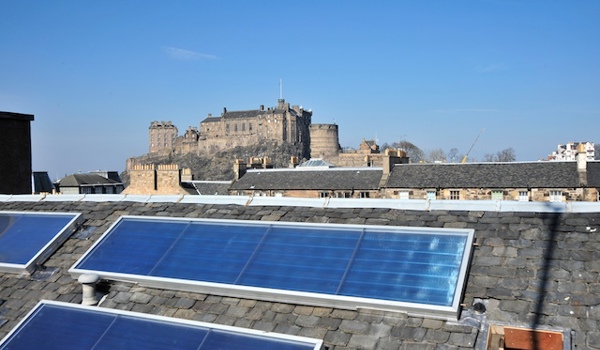Solar Thermal
Solar thermal systems and traditional buildings
Solar thermal systems and traditional buildings
A solar thermal system uses energy from the sun to heat up water for your home.
In Scotland, solar thermal systems tend to be of the “flat plate” or “evacuated tube” type.
A roof-mounted collector feeds heat to a hot water cylinder in the house or flat below via flow and return pipes. These circulate a heat exchange fluid (glycol).
Installing a solar thermal system
To successfully install a solar thermal system, you need a suitable roof space, facing between south-east and south-west, with little to no shading.
Solar thermal requires much less space than solar panels. Calculating a space a bit over 1 metre squared for every occupant of the property is a good general rule to follow.
Consider your use of hot water before installing a solar thermal system. For example, if your kitchen appliances are cold fill, if you use a dishwasher and if you have an electric shower and don’t take baths, solar thermal is not the technology for you.
Additionally, if you don't have a hot water tank, a solar thermal system is unlikely to be the best option for your home.
The Energy Saving Trust has more advice on installing solar water heating.
In a traditional building, there isn’t much risk of damage or disruption from a solar thermal system. Consider where the flow and return pipes would run between the roof-mounted collector, and where your hot water cylinder could be installed.
- Next
-
Costs and savings



